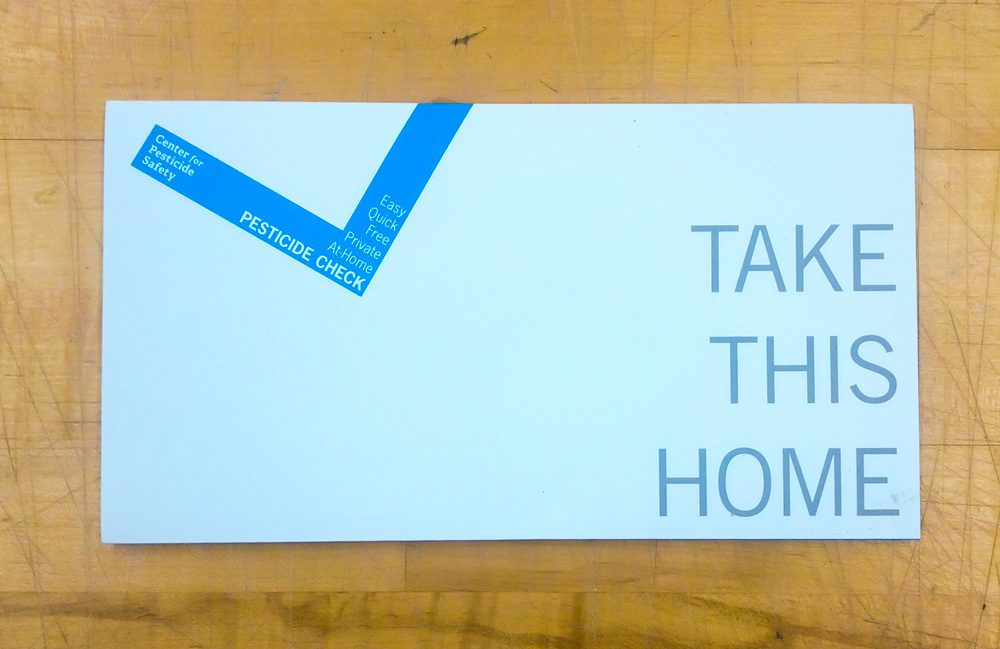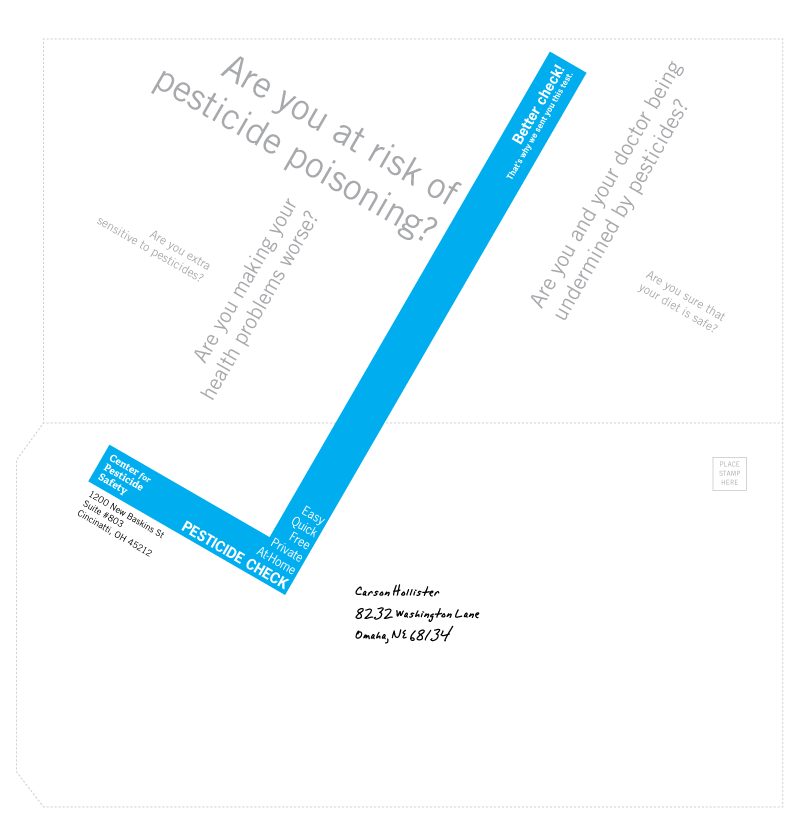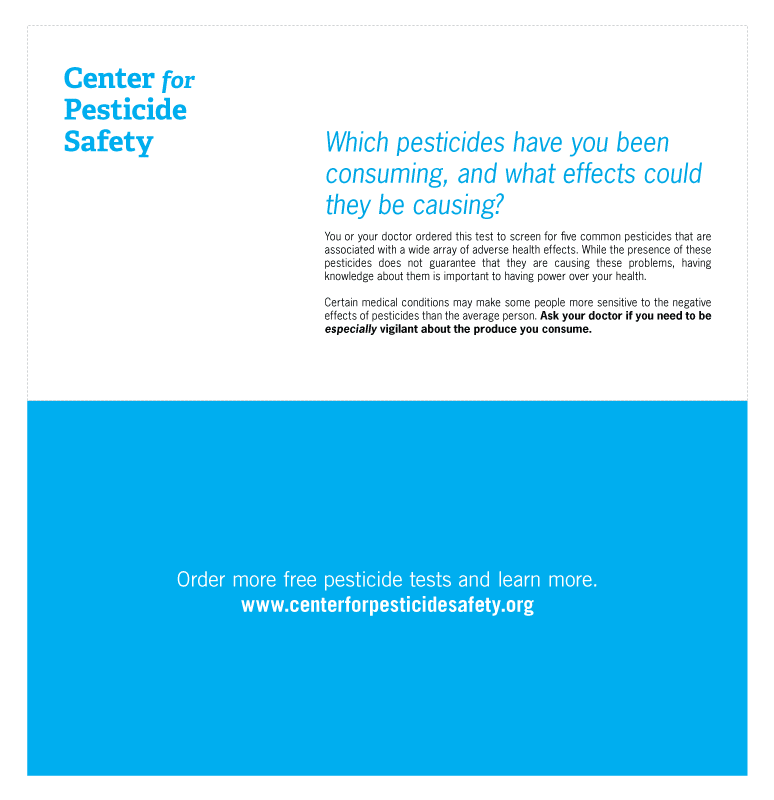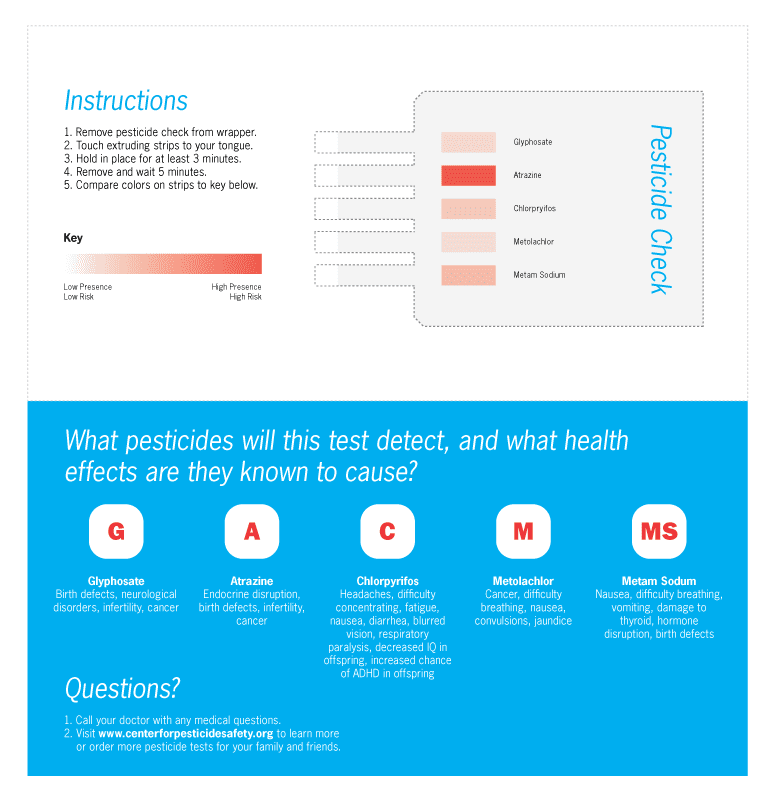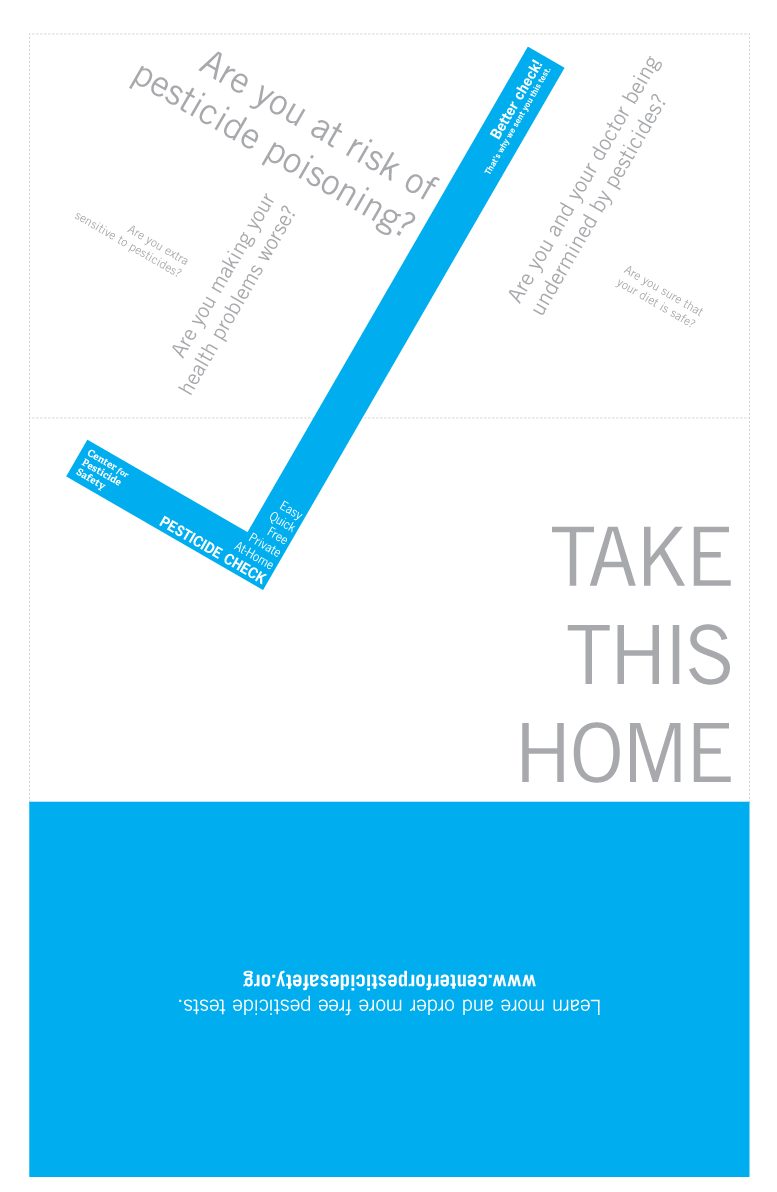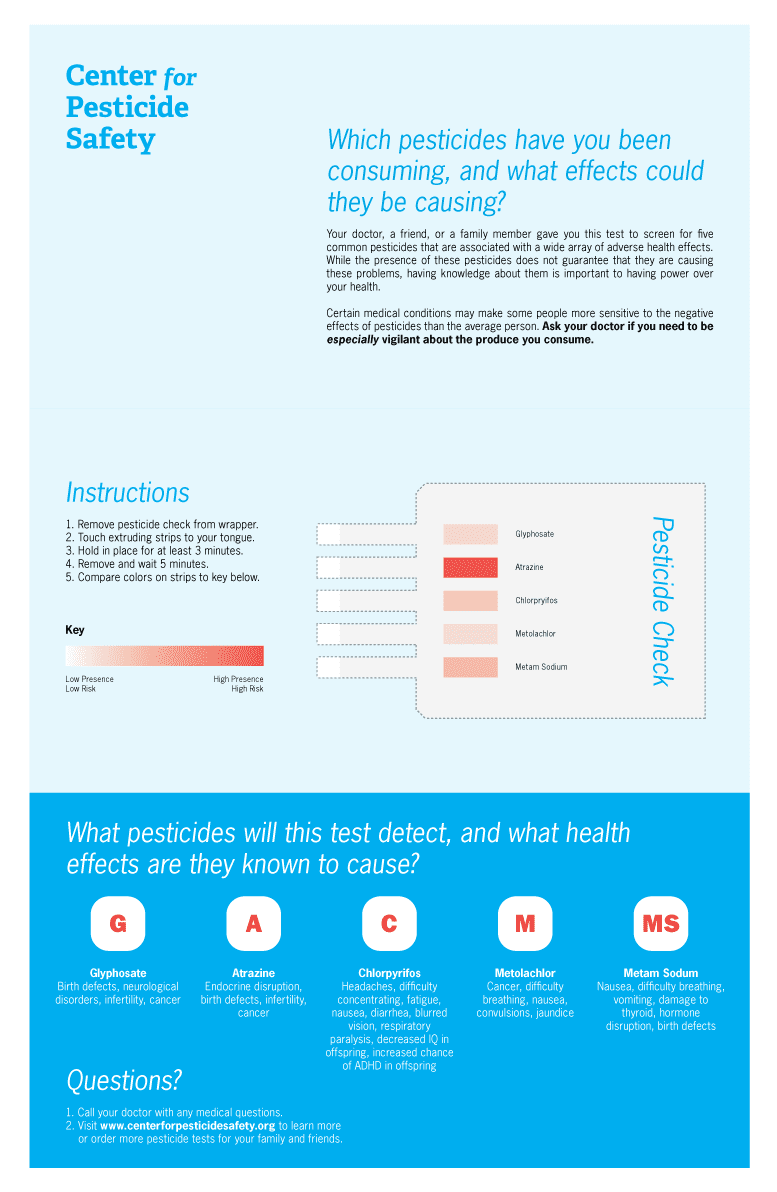Quick Summary
This was a school project in which we were asked to think of a way that we, as designers, could help people be healthier. Having happened to recently read a news article about pesticides that had been misleadingly labelled as being safe for human consumption, I created a campaign to help people detect and remove pesticides from their diets.
Methods
- Historical review
- Contextual analysis
- Rapid sketches
- Low-fi wireframes
- Med-fi wireframes
- Mockups
- Paper prototypes
Tools
- Adobe Illustrator
- Pens, notebooks, post-its, whiteboards, etc.
Products
- Take-home brochure
- Mailer
- Website
Outcomes
- Successfully pivoted mid-project when I realized I framed the problem according to a task instead of a goal
- Used as an example (in a positive way) for the class
Introduction
Over the past decade, people have become increasingly aware of the harmful effects of consuming pesticides. However, there still isn't a convenient way for a person to test whether they're consuming them in their diet. To address this, I set out to design a mailer that would tell people where they could order an at-home test. Later, I would realize I had incorrectly framed the problem. The mailer was still ultimately part of the solution, but was not the solution by itself. To help serve the actual goal of helping people check for pesticides in their diet, I pivoted to include a take-home brochure that contained the test.
Early Designs
At the beginning of the project, I made the mistake of proceeding without examining how I was framing the design problem. I wanted the solution to take the form of a website where people could order tests, so that's what I began sketching and wireframing. These things weren't completely off-target – they could be a valuable part of the solution – but as I'd later realize, they weren't actually the most direct way of serving the goal of helping people get healthier by detecting and eliminating pesticides from their diets.
Reconsideration of Context
It's not enough to just define a goal and identify a target audience because real people don't exist in vacuums. The situations that they'll be in when they encounter a design is as important to think about as anything else when it comes to identifying requirements, opportunities, and deal-breakers. By thinking about this, I realized I'd prematurely dived into the problem. Focusing too much on the tasks related to ordering a mailer from a website had made me lose sight of an entire avenue of prospective users.
Take-Home Brochure
People seeing their doctor or nutritionist are already primed to be thinking about their health. They also have access to materials provided at the office. It would've been easy to make something that would just tell people to go to a website to order the test (as I'd prematurely done with the mailer), but why not just give them the test instead? By removing the need to go to the website to order the test, more people would actually follow through with taking the test.
Conclusion
Because this particular class tended to focus on print design, my initial approach to the project was basically, “How can I design a brochure that will get people to visit a website and order a pesticide test?” But thankfully, I reconsidered how I was framing the problem and realized that my first way of looking at the project mistook a task for a goal. This is a huge problem because the best way to achieve a given task is not necessarily the best way to achieve the goal it's intended to serve. By realizing my mistake and pivoting, I was able to generate a design for something that I believe would be far more effective.
Think I might be a good fit for your team?
